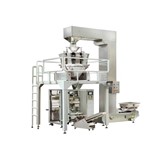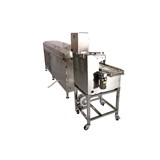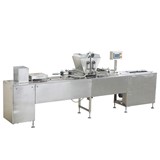STARTING A PET TREATS BUSINESS
Best practice tips for dehydrated pet treats
Across the globe, there’s a growing number of pet owners wanting a better food experience for their precious fur kids. Combined with recalls for some pet foods and a growing interest in being able to identify ingredients to feel secure about product safety, this means it’s a great time for starting a premium dehydrated pet treats business.
Whether you’re looking to create a product for sale through mainstream supermarkets and pet stores, selling through markets, or direct via website sales, there’s a lot to consider.
In this blog, we’ll take a look at some of the factors you can consider including:
- What base ingredients to use
- Dehydration timelines
- Preserving methods
- Packaging materials
- Regulatory compliance
Furthermore, an important thing to consider when making pet treats is food safety and hygiene. If you are also making food for human consumption, you may need to set up separate kitchens with dedicated equipment.
CHOOSING YOUR BASE INGREDIENTS
Customers are looking for pet treats for training, snacks or just as a supplement to other foods to treat their loved furry friend. Just like the demand for “clean foods” for humans has grown, so too has the market for pet treats that are free of preservatives, sweeteners, additives and other fillers.
This creates an opportunity for small scale producers like you to capture part of the market.
There’s a wide variety of foods that can be suitable for pet treats.
For example, for dogs,1 this can include:
- Meat-based products, including organ meats, for example dehydrated chicken breasts, animal liver, pig ears, salmon skin and much more.
- Various fruits and vegetables,2 for example dried apple, green beans and sweet potato.
Of course, it’s important with treats to see them in the context of a pet’s broader diet. That’s why lower calorie choices like dehydrated sweet potato treats can be a great option, especially for training where you might want to use several to reinforce positive behaviour without worrying about over-feeding a pet.
For cats, meat-based treats are best. Dehydrated fish products are especially popular with our feline friends. As carnivores, they just aren’t designed to eat fruits and vegetables!
And, there’s scope for feathered friends too. Poultry like chickens love dehydrated meal worms as a treat.
When sourcing your meat, you’ll need to check what rules and regulations apply in your market – and the market you are planning to sell in – about what is suitable for animal consumption. Of course, you may like to differentiate your product from mass-produced brands by focusing on higher grade products. Many pet owners are prepared to pay a premium for pet treats that are made from ingredients that are suitable for human consumption, with only the best being good enough for their fur-babies.
Of course, it’s also vital to ensure that you are using foods that are safe for animals. For example, some foods that are fine for humans, like chocolate and grapes, can make dogs very sick, even leading to death.
The Association of American Animal Feed Control Officials,3 which is also the association most Australian pet food businesses follow, says ingredients must be officially defined animal feed ingredients, be approved additives, or be Generally Recognised as Safe (GRAS) additives. All ingredients should be listed on the packaging, using the AAFCO defined name. Care should especially be taken with ingredients that may be used as dietary supplements for humans as these may not be considered safe and approved for animal consumption.
WHAT ABOUT PRESERVATIVES?
Often in dehydrated foods for human consumption, some preserving agents are used. For example, jerky and biltong both involve curing meat with salt to inhibit microbial growth.
The use of salt is one reason why dehydrated meat products intended for human consumption are often not recommended for pets. Of course, some level of salt can be used to prolong shelf-life, but it’s important for pet owners to keep an eye on salt level, especially for animals who have conditions like congestive heart failure and need to stick to a low-salt diet.
PREPARING YOUR PET TREATS FOR DEHYDRATION
Like any food dehydration, some of the most important factors for safe drying of pet treats and the minimisation of spoilage due to mould and other bacteria are:
- Humidity
- Temperature
- Air flow
A commercial dehydrator allows you to control all three of these elements for a more consistent approach to making pet treats.
Drying times will vary greatly between different meats, vegetables and other ingredients you may be using in your pet treats. Of course, factors like the size of the produce, whole pieces vs slices, and the preparation and soaking methods used will all result in variations in drying time.
When loading the trays of your dehydrator, ensure to give each piece plenty of space – there should be no touching or overlapping. This is because consistent air flow around the produce is one of the critical factors to successful dehydration.
You may choose to dehydrate in larger pieces, or smaller slices. The thickness of your raw material will influence the drying time. It’s also a good idea to consider the size of the animal that will be eating your pet treats. It’s much easier to feed a larger dog more small treats than to stop a small dog from over-indulging on treats that are too big for their calorific need.
Another option is to create a blend of ingredients, often pureed then dried in sheets, before being cut into smaller pieces. This can be a good option for organ meat which can sometimes be visually challenging for some squeamish pet owners.
When dehydrating vegetables for human consumption, it’s common practice to pre-blanch in boiling water. This step is primarily to preserve the colour. Technically, this means it’s not so important for pet foods as animals are not so concerned with the physical appearance of their food, but it may be a good idea to appeal to discerning pet owners.
PACKAGING YOUR PET TREATS
There’s a range of packaging options4 available depending on what your pet treats are made of. High fat, high moisture treats like dried meats need protection against oxygen and moisture, so a high-barrier packaging combined with an oxygen scavenger (moisture absorber) is a gret idea. Baked dog biscuits don’t usually need the same protection, and may be fine in more simple packaging.
You’ll also need to ensure you meet any labelling compliance requirements3 in your market and the market you are selling in. The AAFCO3 says that labels should have ingredients listed in descending order by weight.
It’s important to note that pet food is regulated in most countries, both at federal and state levels. Different regulations may apply between states, but manufacturers need to ensure they meet the compliance requirements in all markets where you are selling your pet treats. For example, you might be based in California, but selling across the United States via your website. This means you need to ensure you are meeting the legal requirements in each of the states where your pet treats are available.3
READY TO START YOUR PET TREATS BUSINESS?
We’ve got a great range of commercial dehydrators to suit new businesses, growing businesses and established businesses. Explore our products and get in touch if you need help choosing the right dehydrator for your needs.










-160x160-state_article-rel-cat.png)

-160x160-state_article-rel-cat.png)











